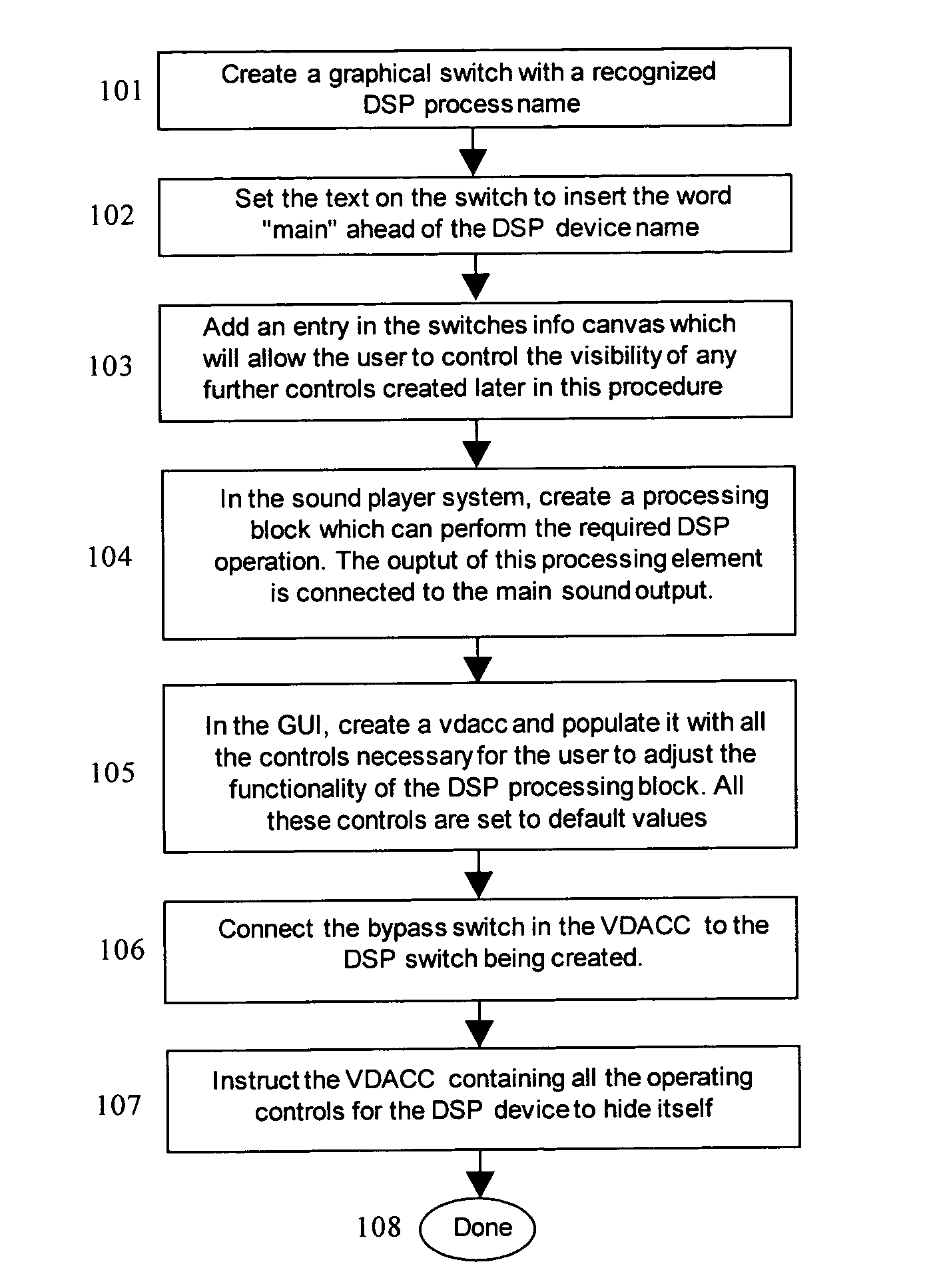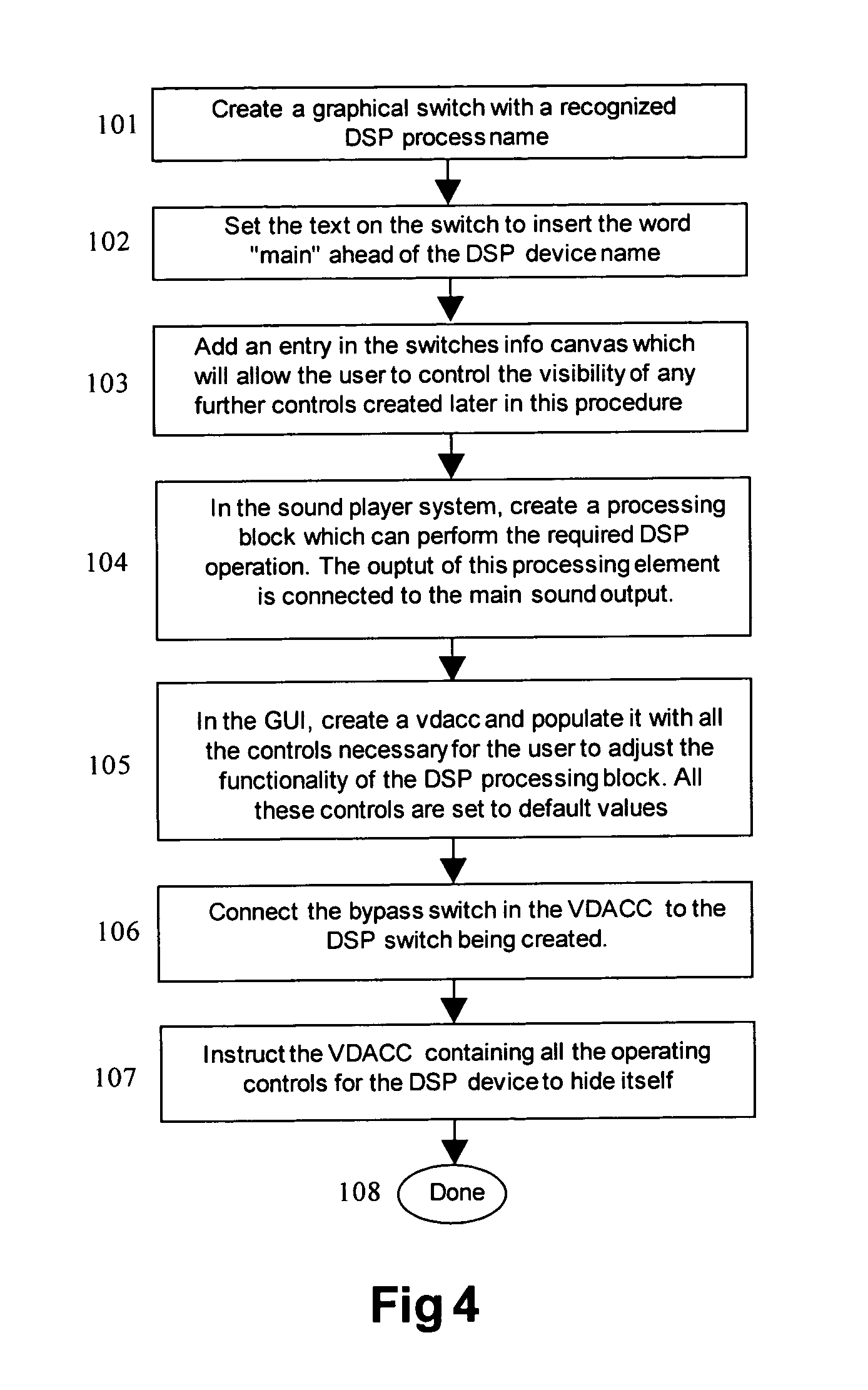Method and apparatus for performing multimedia operations
a multimedia operation and multimedia technology, applied in the field of computer operations, can solve the problems of complicated audio signals, complicated operation, complicated audio production, mixing and editing software,
- Summary
- Abstract
- Description
- Claims
- Application Information
AI Technical Summary
Benefits of technology
Problems solved by technology
Method used
Image
Examples
example 1
[0166] Let's say a red arrow is drawn between four (4) faders such that the arrow intersects all four faders. Let's further say the red arrow logic is a “control logic,” namely, the arrow permits the object that it's drawn from to control the object that it's drawn to. Therefore, with this arrow logic of the red arrow, a target is required. Furthermore, the first intersected fader will control the last intersected fader and the faders in between will be ignored. See Blocks 411 and 412 in this flowchart.
example 2
[0167] Let's say a yellow arrow is drawn between four faders, such that the arrow shaft intersects the first three faders and the tip of the arrow intersects the fourth fader. Let's further say that an “assignment” arrow logic is designated for the color yellow, namely, “every object that the arrow intersects will be assigned to the object that arrow points to.” In this case, the arrow logic will be invalid, as a fader cannot be assigned to another fader according to this logic. Whereas, if the same yellow arrow is drawn to intersect four faders and the arrowhead is made to intersect a blue star, the four faders will be assigned to the star.
[0168] The behavior of the blue star will be governed by the yellow arrow logic. In this instance, the four faders will disappear from the screen and, from this point on, have their screen presence be determined by the status of the blue star. In other words, they will reappear in their same positions when the blue star is clicked on and then di...
example 3
[0169] Let's say you draw a green arrow which has a “copy” logic assigned to it, which states, “copy the object(s) that the arrow shaft intersects or encircled to the point on the Global Drawing surface (Blackspace) that the tip of the arrowhead points to”. Because of the nature of this arrow logic, no target object is required. What will happen is that the object(s) intersected or encircled by the green arrow will be copied to another location on the Global Drawing surface.
[0170] If the answer to Block 405 is yes, the process proceeds to Block 406. If no, the process proceeds to Block 408.
[0171] Block 406. Determine the target object TARGETOBJECT for the rendered arrow by analysis of the Blackspace objects which collide or nearly collide with the rendered arrowhead. The software looks at the position of the arrowhead on the global drawing surface and determines which objects, if any, collide with it. The determination of a collision can be set in the software to require an actual...
PUM
 Login to View More
Login to View More Abstract
Description
Claims
Application Information
 Login to View More
Login to View More - R&D
- Intellectual Property
- Life Sciences
- Materials
- Tech Scout
- Unparalleled Data Quality
- Higher Quality Content
- 60% Fewer Hallucinations
Browse by: Latest US Patents, China's latest patents, Technical Efficacy Thesaurus, Application Domain, Technology Topic, Popular Technical Reports.
© 2025 PatSnap. All rights reserved.Legal|Privacy policy|Modern Slavery Act Transparency Statement|Sitemap|About US| Contact US: help@patsnap.com



